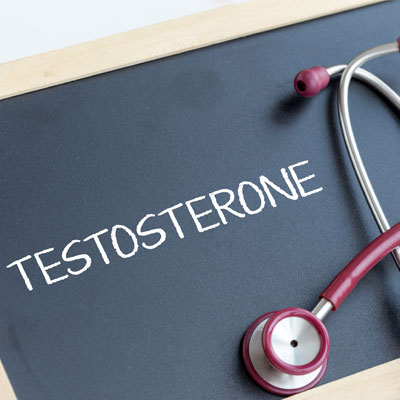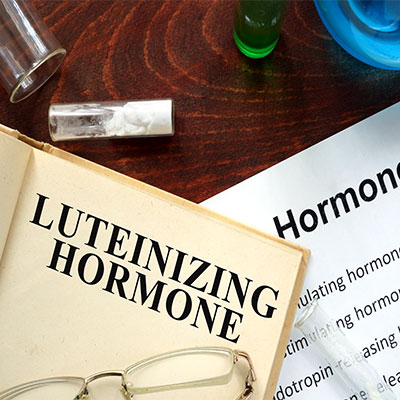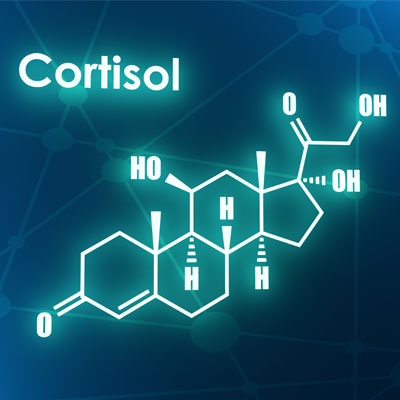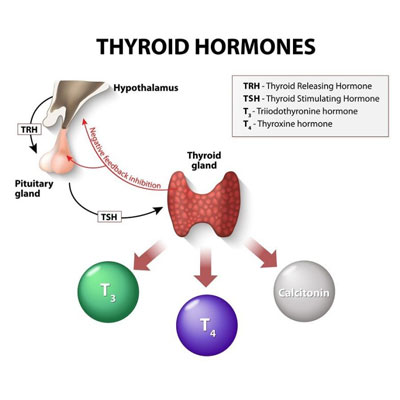Free Testosterone and Total Testosterone
Contents
- Where Does Testosterone Come From?
- What is Free Testosterone?
- What Happens If Your Free Testosterone Is Low?
- What is Total Testosterone
- Free Testosterone vs. Total Testosterone
- What Happens if Your Total Testosterone Is Low?
- How Do We Test for Total and Free Testosterone Levels?
- How Is a Total Testosterone Test Done?
- What Does a Complete Testosterone Blood Test Measure?
- When Might Total Testosterone Testing Not Be Enough?
- Reference Values
- What Does the Medical Research Say About Free and Total Testosterone?
Total testosterone is the combination of free and bound testosterone.
Testosterone in the male and female body exists as either “free” or “bound” testosterone. Testosterone is the most important androgen or male hormone. However, females need and produce testosterone as well, albeit in smaller amounts than their male counterparts.
Most of the testosterone in your blood is attached to one of two proteins: albumin and sex hormone-binding globulin (SHBG). However, there is some testosterone in the bloodstream that is not attached to either albumin or SHBG.
This is what doctors refer to as “free testosterone.”
The combination of both your protein-bound testosterone and free testosterone is your “total testosterone,” sometimes also referred to as bioavailable testosterone.
Where Does Testosterone Come From?
Testosterone is the most important male hormone. In males, it is produced by the sex organs, the testes. Women’s bodies make and need testosterone as well, albeit in smaller amounts. In women, testosterone is produced primarily by the ovaries.
In men, testosterone is responsible for all of the secondary sexual characteristics of “maleness” that occur as a boy hits puberty – i.e., lower voice, facial hair, bigger muscles, sexual maturity, etc. In both men and women, testosterone plays a vital role in muscle strength, bone health, fat metabolism, energy, and many other factors impacting overall health.
As both men and women age, total testosterone levels drop, which can lead to age-related low testosterone.
What is Free Testosterone?
Most of the time, the testosterone in your blood is “bound” to proteins. But, less frequently, it glides through the blood unbound, as “free testosterone.”
If your doctor suspects that you are experiencing low testosterone and you need to have your testosterone levels tested, your healthcare provider may want to test both your total testosterone levels and your free testosterone levels.
If your doctor suspects you are dealing with age-related testosterone decline, usually a test your total testosterone will suffice. However, in some cases, for a more exacting diagnosis and treatment plan, doctors may want to see your free (unbound) testosterone level.
The following table illustrates the range of normal “free” testosterone for men and women by age.
Gender/age (y) | Range (pg/mL) |
| Male | |
| 0 to 19 | Not established |
| 20 to 29 | 9.3−26.5 |
| 30 to 39 | 8.7−25.1 |
| 40 to 49 | 6.8−21.5 |
| 50 to 59 | 7.2−24.0 |
| >59 | 6.6−18.1 |
| Female | |
| 0 to 19 | Not established |
| >19 | 0.0−4.2 |
Source: LabCorp (FREE T)
What Happens If Your Free Testosterone Is Low?
If you have been asked to have a free testosterone test, most likely, your doctor has already ordered a “total” testosterone test, and those results indicated a lower than normal testosterone level for your weight and age. If your free testosterone is low, that will be used to confirm your doctor’s diagnosis of low testosterone, and you will likely be prescribed a course of testosterone replacement therapy.
Testosterone replacement injections are only available via a doctor’s prescription and are only prescribed for those who have received a legitimate diagnosis of low testosterone.
What is Total Testosterone
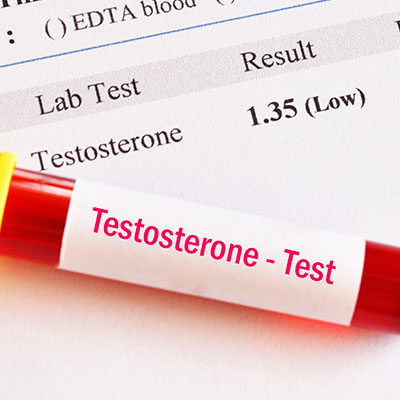
If your doctor suspects that you may have low testosterone, you will most likely first be given a simple blood test for your total testosterone. If your total testosterone levels come back as low, your doctor may follow up with a test for your free testosterone, as this will give your healthcare provider a more accurate picture of your ability to produce adequate amounts of testosterone.
Free Testosterone vs. Total Testosterone
Total testosterone is a measure of both free and bound testosterone. Almost all of the testosterone in your body is attached to one of two proteins: albumin and sex hormone-binding globulin (SHBG). However, a small amount of testosterone, about 5%, is unattached, otherwise known as “free” testosterone.
Testosterone in your blood travels as either “bound” or “free” testosterone.
What Happens if Your Total Testosterone Is Low?
If your total or free testosterone levels are found to be below, you could benefit from testosterone therapy. We will evaluate the results of your lab tests and your symptoms to determine if you are a candidate for prescription testosterone injections. If you are, you will be prescribed a course of testosterone therapy designed to target the testosterone level that is optimal for you.
How Do We Test for Total and Free Testosterone Levels?
Evaluation of your testosterone levels requires a blood test. As you have come to learn, the testosterone in your blood travels in two ways:
- Attached to the proteins albumin and sex hormone-binding globulin (SHBG)
- Free — not attached to any proteins
Usually, your blood will be tested for total testosterone as your initial screening test. This measures both free and attached testosterone.
To diagnose certain conditions, doctors sometimes look only at free testosterone levels.
How Is a Total Testosterone Test Done?
Total testosterone (total T) is measured via a simple blood test. Based upon the results of your total T-tests, your doctor may follow up with a free testosterone test.
The following chart illustrates the normal total testosterone levels for men and women by “Tanner Stage” and age. The Tanner Scale breaks down the observable signs of puberty into 5 stages, running from Stage I from about age 10 to Stage V at 15 for boys and about age 8 to 15 for girls.
Tanner Stage | Male | Female |
Testosterone | Testosterone | |
| I | <3 | <3−6 |
| II | <3−432 | <3−10 |
| III | 65−778 | <3−24 |
| IV | 180−763 | <3-27 |
| V | 188−882 | 5−38 |
| Adult Male | Adult Female | |
| >18 y: 264-916 | 20 to 49 y: 8−48 | |
| >49 y: 3−41 |
Source: LabCorp
To compare so that you can better understand how variable that “so-called” normal levels of testosterone can be, the following chart gives the “normal” testosterone levels from Quest Diagnostics, another respected testing lab. Quest does not use the Tanner Scale but rather indicates the normal ranges for males and females by age.
| 1-5 Years | ≤5 | ≤8 |
| 6-7 Years | ≤25 | ≤20 |
| 8-10 Years | ≤42 | ≤35 |
| 11 Years | ≤260 | ≤40 |
| 12-13 Years | ≤420 | ≤40 |
| 14-17.9 Years | ≤1000 | ≤40 |
| ≥18 Years | 250-1100 | 2-45 |
Source: Quest Diagnostics
If you compare this chart to the first chart from LabCorp, you can see how the “normal” ranges differ. These two charts come from two of the most respected testing labs in the country, and yet they have differences. That should help you to understand why it is very hard to pinpoint what is the “normal” total testosterone level for any given person of any given age.
This is precisely why our doctors try to bring every patient to a “target level” that we have found to be optimal for most patients, regardless of age or gender.
Once we determine what your unique optimal level is, we can tailor treatments that will get you in that zone, so you can perform at your personal best, regardless of your age.
What Does a Complete Testosterone Blood Test Measure?
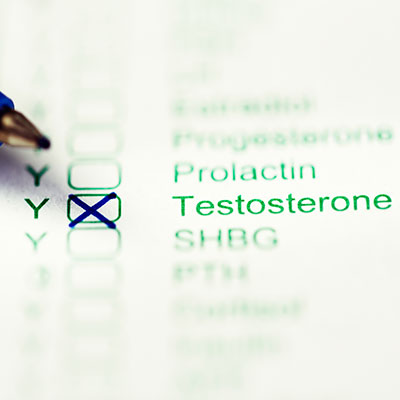
According to the Mayo Clinic Laboratories, “this test is useful for second- or third-order testing for evaluating testosterone status (e.g., when abnormalities of sex hormone-binding globulin are present).
When Might Total Testosterone Testing Not Be Enough?
The Mayo Clinic Laboratories page goes on to say that “measurement of total testosterone (TTST / Testosterone, Total, Mass Spectrometry, Serum) is often sufficient for diagnosis [of low testosterone], particularly if it is combined with measurements of LH and follicle-stimulation hormone (FSH) (LH / Luteinizing Hormone [LH], Serum and FSH / Follicle-Stimulating Hormone [FSH], Serum). However, these tests may be insufficient for a diagnosis of mild abnormalities of testosterone homeostasis, particularly if abnormalities in SHBG (SHBG / Sex hormone-binding Globulin [SHBG], Serum) function or levels are present.
Reference Values
Per the Mayo Clinic Laboratories, here is a complete listing of all Reference Values.
TESTOSTERONE, TOTAL
Gender/age (y) | Range (ng/dL) |
| Male | |
| 0-5 months | 75-400 |
| 6 months-9 years | >7-20 |
| 10-11 | >7-130 |
| 12-13 | >7-800 |
| 14 | >7-1,200 |
| 15-16 | 100-1,200 |
| 17-18 | 300-1,200 |
| > or =19 | 240-950 |
| Female | |
| 0-5 months | 20-80 |
| 6 months-9 years | <7-20 |
| 10-11 | <7-44 |
| 12-16 | <7-75 |
| 17-18 | 20-75 |
| >or =19 years | 8-60 |
Tanner Stages*
Tanner Stage | Male | Female |
Testosterone | Testosterone | |
| I (prepubertal) | <7-20 | <7-20 |
| II | 8-66 | <7-47 |
| III | 26-800 | 17-75 |
| IV | 85-1,200 | 20-75 |
| V (young adult) | 300-950 | 12-60 |
*Puberty onset (transition from Tanner stage I to Tanner stage II) occurs for boys at a median age of 11.5 (+/-2) years and for girls at a median age of 10.5 (+/-2) years. There is evidence that it may occur up to 1 year earlier in obese girls and in African American girls. For boys, there is no definite proven relationship between puberty onset and body weight or ethnic origin. Progression through Tanner stages is variable. Tanner stage V (young adult) should be reached by age 18.
TESTOSTERONE, FREE
Age (y) | Males (adult)/Range (ng/dL) | Females (adult)/Range (ng/dL) |
| 20-<25 | 5.25-20.7 | 0.06-1.08 |
| 25-<30 | 5.05-19.8 | 0.06-1.06 |
| 30-<35 | 4.85-19.0 | 0.06-1.03 |
| 35-<40 | 4.65-18.1 | 0.06-1.00 |
| 40-<45 | 4.46-17.1 | 0.06-0.98 |
| 45-<50 | 4.26-16.4 | 0.06-0.95 |
| 50-<55 | 4.06-15.6 | 0.06-0.92 |
| 55-<60 | 3.87-14.7 | 0.06-0.90 |
| 60-<65 | 3.67-13.9 | 0.06-0.87 |
| 65-<70 | 3.47-13.0 | 0.06-0.84 |
| 70-<75 | 3.28-12.2 | 0.06-0.82 |
| 75-<80 | 3.08-11.3 | 0.06-0.79 |
| 80-<85 | 2.88-10.5 | 0.06-0.76 |
| 85-<90 | 2.69-9.61 | 0.06-0.73 |
| 90-<95 | 2.49-8.76 | 0.06-0.71 |
| 95-100+ | 2.29-7.91 | 0.06-0.68 |
Males (children):<1 year: Term infants
- 1-15 days: 0.20-3.10 ng/dL*
- 16 days-1 year: Values decrease gradually from newborn (0.20-3.10 ng/dL) to prepubertal levels
*Citation: J Clin Endocrinol Metab 1973;36(6):1132-1142
- 1-8 years: <0.04-0.11 ng/dL
- 9 years: <0.04-0.45 ng/dL
- 10 years: <0.04-1.26 ng/dL
- 11 years: <0.04-5.52 ng/dL
- 12 years: <0.04-9.28 ng/dL
- 13 years: <0.04-12.6 ng/dL
- 14 years: 0.48-15.3 ng/dL
- 15 years: 1.62-17.7 ng/dL
- 16 years: 2.93-19.5 ng/dL
- 17 years: 4.28-20.9 ng/dL
- 18 years: 5.40-21.8 ng/dL
- 19 years: 5.36-21.2 ng/dL
Females (children):<1 year: Term infants
- 1-15 days: 0.06-0.25 ng/dL*
- 16 days-1 year: Values decrease gradually from newborn (0.06-0.25 ng/dL) to prepubertal levels
*Citation: J Clin Endocrinol Metab 1973;36(6):1132-1142
- 1-4 years: <0.04 ng/dL
- 5 years: <0.04-0.07 ng/dL
- 6 years: <0.04-0.14 ng/dL
- 7 years: <0.04-0.23 ng/dL
- 8 years: <0.04-0.34 ng/dL
- 9 years: <0.04-0.46 ng/dL
- 10 years: <0.04-0.59 ng/dL
- 11 years: <0.04-0.72 ng/dL
- 12 years: <0.04-0.84 ng/dL
- 13 years: <0.04-0.96 ng/dL
- 14 years: <0.04-1.06 ng/dL
- 15-18 years: <0.04-1.09 ng/dL
- 19 years: 0.06-1.08 ng/dL
TESTOSTERONE, BIOAVAILABLE
Males
- < or =19 years: not established
- 20-29 years: 83-257 ng/dL
- 30-39 years: 72-235 ng/dL
- 40-49 years: 61-213 ng/dL
- 50-59 years: 50-190 ng/dL
- 60-69 years: 40-168 ng/dL
- > or =70 years: not established
Females (non-oophorectomized)
- < or =19 years: not established
- 20-50 years (on oral estrogen): 0.8-4.0 ng/dL
- 20-50 years (not on oral estrogen): 0.8-10 ng/dL
- >50 Years: not established
Often a test of your total testosterone is not enough if your doctor suspects a specific disease or condition requiring more advanced treatment.
What Does the Medical Research Say About Free and Total Testosterone?

However, despite the large number of T publications, there are no reference materials which consolidate all relevant and potentially confounding factors necessary to appropriately interpret T studies.” Because of this, the researchers said the aim of their study was to “create a resource document that reviews sources of T variability, free versus total T, assay techniques and questionnaires, and study methodology relevant to interpreting outcomes.”
A recent study published in Urology evaluated the relative values of a total testosterone test versus a free testosterone test and when each should be used to determine a diagnosis of age-related low testosterone. The investigators studied the charts of 3700 men (mean age, 60; half with obesity) who had both total T and calculated free T checked during a hypogonadism workup. They offered the following conclusions as to when each of the two tests were appropriate:
- Total testosterone (T) measurement is a good initial diagnostic test in the evaluation of hypogonadism, but it has its limitations.
- Reserve use of free T for patients whose total T is between 150 and 350 ng/dL or in obese or older men whose total T may be erroneously low.
Normal free testosterone levels are presented in a range based on age and gender.
Now that you know a bit more about the relationship between free and total testosterone levels, why not contact us today and learn more about the many life-changing benefits of growth hormone therapy.
FAQ
What is Being Tested in a Complete Testosterone Test?
Sometimes doctors will want a complete testosterone blood test that tests for your total testosterone and your free or "bioavailable" testosterone. This test measures the level of testosterone in your blood. Depending on what your doctor has ordered, you will receive results measured as total testosterone, either alone or in combination with free testosterone and/or bioavailable testosterone.
What Are Total Testosterone, Free Testosterone, and Bioavailable Testosterone?
Most testosterone (up to 98%) circulates in the blood bound to proteins. A small amount of testosterone (less than 4%) circulates in the blood as free testosterone—it is not bound to protein. The bound plus unbound (free) testosterone is measured by labs as total testosterone.
Why To Have This Test
You are being ordered to have this test to detect an abnormal testosterone level in males and females. In men, this is usually to evaluate symptoms of low testosterone.
In females, this test may be given to help diagnose the cause of masculine physical features (virilization), excess body hair (hirsutism), infertility, or polycystic ovary syndrome (PCOS)
The testosterone test may be ordered to monitor or evaluate the results of testosterone therapy in either gender.
When to Get Tested
This test will most likely be ordered for you when your exhibiting signs of low testosterone. The signs and symptoms of low testosterone include:
- A lack of energy
- Weight gain, particularly belly fat
- Muscle loss
- Increased fatigue
- Loss of interest in sex or poor sexual performance
- Loss of drive and confidence
- Depression, anxiety, irritability, and other "mood swings"
- Memory issues and other cognitive difficulties
What Could the Results of a Testosterone Test Mean?
A low testosterone level (male hypogonadism) may be due to:
- Age-related testosterone decline
- Chronic diseases such as type 2 diabetes, HIV, liver disease, kidney disease, or autoimmune diseases
- Physical injury or trauma to the testicles
- Viral diseases like mumps
- Chemotherapy or radiation therapy
- Use of medications such as antidepressants or narcotic pain medications
- Hypothalamic or pituitary disease
- Genetic diseases that can cause decreased testosterone production in young men (e.g., Klinefelter, Kallman, and Prader-Willi syndromes) or testicular failure and infertility (e.g., myotonic dystrophy, a form of muscular dystrophy)
A higher than normal testosterone level in males can indicate:
- Testicular tumors
- Adrenal tumors that are producing testosterone
- Use of anabolic steroids, which contain synthetic testosterone
- Early puberty of unknown cause in boys
Females:
In women, testosterone levels are normally much lower than in males, and there are different ranges of normal for women than men.
Low testosterone in women is usually the result of menopause or age-related testosterone decline.
Increased testosterone levels can indicate:
- Polycystic ovary syndrome (PCOS)
- Ovarian tumor or adrenal gland tumor
- Congenital adrenal hyperplasia
- Testosterone exposure (from physical contact with someone around them using topical testosterone products)
Are There Any Other Lab Tests That May Be Given?
Depending on the reason for testing, other tests and hormone levels may be done in addition to testosterone testing. Some examples include:
- SHBG
- FSH, LH
- Estrogens
- Anti-Müllerian hormone (AMH)
- Dehydroepiandrosterone sulfate (DHEAS)
- Prolactin
- 17-Hydroxyprogesterone
- Androstenedione
- Jennifer L Shea, Pui-Yuen Wong, Yu Chen
- Alvaro Ocampo M.D.
- David J Handelsman
- L. Antonio, S. Pauwels, M. R. Laurent, D. Vanschoubroeck, I. Jans, J. Billen, F. Claessens, B. Decallonne, Diane De Neubourg, P. Vermeersch, D. Vanderschueren
- Charles Patrick Davis, MD, PhD Medical Editor: Steven Doerr, MD
Free testosterone: clinical utility and important analytical aspects of measurement
‘Total’ vs. ‘Free’ Testosterone: What’s the Difference?
Free Testosterone: Pumping up the Tires or Ending the Free Ride?
Free Testosterone Reflects Metabolic as well as Ovarian Disturbances in Subfertile Oligomenorrheic Women
High and Low Testosterone Levels in Men



